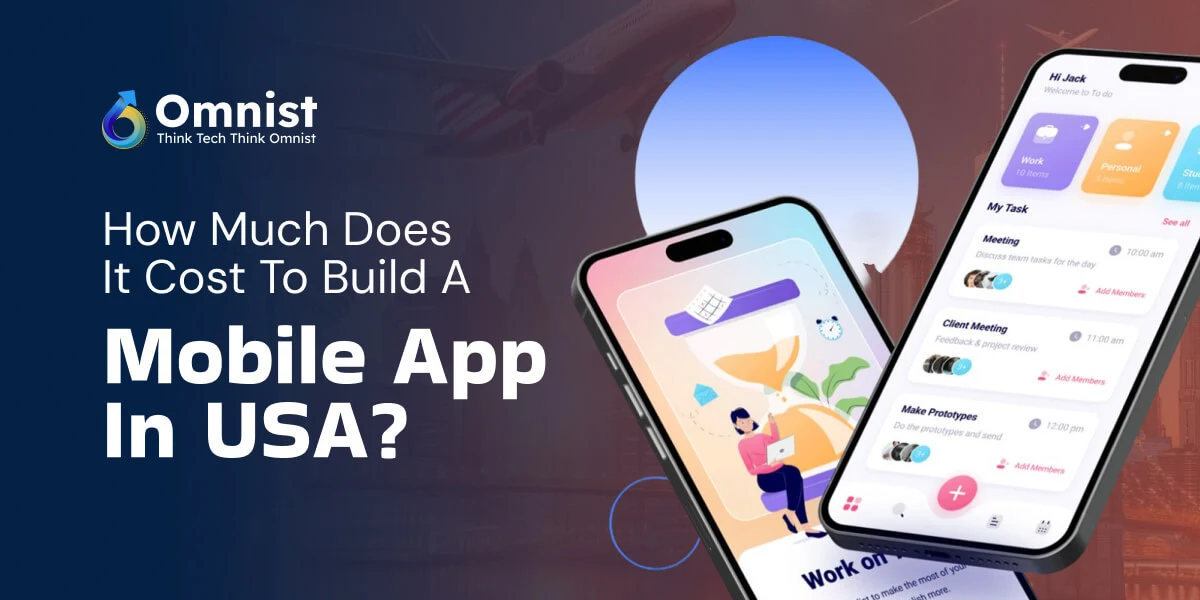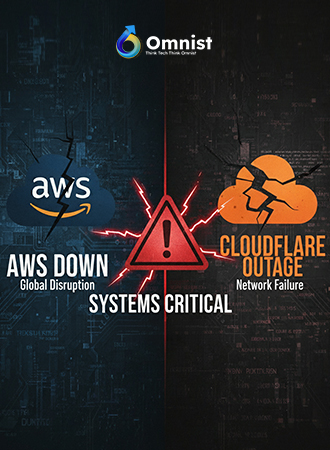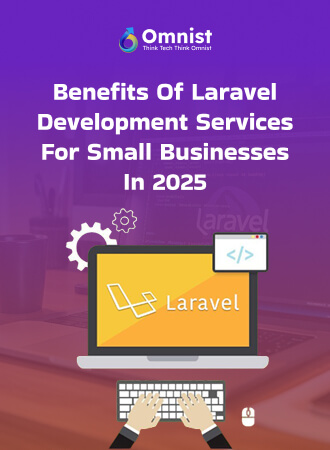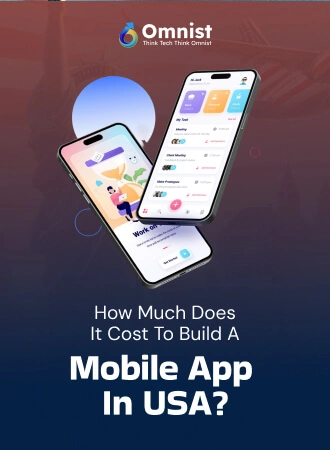App Technologies 13 Oct, 2025
How Much Does it Cost to Build a Mobile App in USA?

In today’s digitally connected world, mobile applications have become central to how businesses interact with customers, streamline operations, and innovate their offerings. Whether you’re a startup with a groundbreaking idea or an established enterprise seeking to expand your services, a mobile app can be a game-changer. However, one of the most common and crucial questions every business owner faces before diving into app development is: How much does it cost to build a mobile app in the USA?
The answer is not straightforward – app development cost depends on multiple factors, including complexity, features, design, technology stack, and even the geographical location of your development team. Understanding these elements can help you plan your budget more accurately and make informed decisions.
Key Factors That Influence Mobile App Development Cost
Several aspects significantly influence the budget required to build a mobile application. Let’s explore them in detail.
1. Type of Mobile Application
The category your app falls into will impact the cost. Common app types include:
-
Simple apps: Apps with minimal functionality, such as basic business directories or appointment-booking tools, require less development time and cost.
-
E-commerce apps: These include interactive product catalogs, payment gateways, and order tracking.
-
Advanced enterprise apps: Feature-rich tools with integrations, real-time data processing, and complex workflows.
-
Gaming apps: Often require extensive graphic design, physics engines, and high-performance backend systems.
Generally, the more complex the app, the higher the cost.
2. Platform Choice
Deciding whether you want to develop the app for iOS, Android, or both (cross-platform) is a major cost driver.
-
Native apps: Built for a single platform using programming languages such as Swift (iOS) or Kotlin (Android). They deliver the best performance but generally have higher development costs because each platform requires separate codebases.
-
Cross-platform apps: Developed with frameworks such as React Native or Flutter, allowing you to run a single codebase across platforms, reducing cost and time.
3. App Features and Functionality
The depth and complexity of features like authentication, geolocation, push notifications, payment integration, live chat, or AI-powered recommendations determine how much development effort is needed.
Commonly cost-heavy features include:
-
Real-time data syncing
-
Video/audio streaming
-
Augmented Reality (AR) or Virtual Reality (VR)
-
Complex backend architecture
-
Integration with third-party systems
Each additional feature requires design, development, and testing – adding to the overall cost.
4. Design Complexity
Your app’s design is just as important as its functionality. A well-crafted user interface (UI) and seamless user experience (UX) require skilled designers, wireframing, prototyping, and consistent iteration.
Custom animations, unique interface elements, and detailed icons increase design hours and subsequently the budget. However, investing in good design pays off in user engagement and retention.
5. Development Team Location
An important component that influences cost is where your developers are based. In the USA, average hourly rates for experienced mobile app developers range between $100 to $200 per hour, depending on expertise and services offered.
If your budget is limited, you might consider partnering with developers in countries with lower hourly rates. However, this may involve trade-offs in communication ease, time zones, and sometimes quality control.
6. Maintenance and Updates
After launch, maintaining and updating the app will generate ongoing expenses. Regular updates ensure that your app remains compatible with newer OS versions, stays secure, and adapts to user feedback.
Maintenance costs average between 15% to 20% of the initial development cost annually.
Estimated Cost Breakdown for Mobile Apps in USA
Below is a general cost outline for mobile app development in the USA:
| Type of App | Estimated Development Cost |
|---|---|
| Simple app (basic functions) | $20,000 – $40,000 |
| Medium-complexity app | $40,000 – $80,000 |
| Complex app with advanced features | $80,000 – $200,000+ |
| High-end enterprise/gaming app | $200,000 – $500,000+ |
Hidden Costs to Consider
Aside from the primary development and design expenses, there are additional costs that many businesses overlook.
1. App Store Fees
Publishing an app on the Apple App Store requires a $99/year developer account, while Google Play Store charges a one-time $25 fee. If your app uses in-app purchases, app store commissions apply.
2. Marketing and Promotion
Your app needs visibility to succeed. Budgeting for marketing campaigns – SEO, PPC, social media ads – ensures that your target audience discovers and downloads your app.
3. Legal and Compliance
Apps that deal with user data must comply with regulations such as GDPR or the California Consumer Privacy Act (CCPA). This could involve additional legal consultations and adjustments.
4. Security
Building robust security features like data encryption, secure authentication, and fraud detection safeguards both the app and users but increases development costs.
How to Optimize Your Mobile App Development Cost
While mobile app development can be expensive, strategic decisions can help optimize cost without compromising quality.
1. Start with MVP (Minimum Viable Product)
Instead of building a full-featured app from the start, create an MVP with just the core functionalities. This lets you launch quickly, gather user feedback, and focus resources on features that truly add value.
2. Choose Cross-Platform Development
By selecting React Native or Flutter, you cut down on separate native development expenses while still delivering near-native performance.
3. Outsource Wisely
Consider outsourcing to highly rated development companies that balance affordability with quality. Read reviews, check portfolios, and communicate clearly to ensure alignment.
4. Plan Features in Phases
Building in stages spreads costs over time and helps manage budgets better. It also reduces the risk of overspending on features that don’t perform as expected.
5. Invest in Good Project Management
Proper project planning avoids costly delays and feature creep. A well-defined roadmap ensures smooth execution.
The Cost vs. Value Perspective
While high development costs may seem daunting, it’s important to assess the value the mobile app will bring to your business. A well-built app can generate significant ROI through streamlined operations, improved customer engagement, and new revenue channels.
Think of app development as a strategic investment rather than just an expense. Partnering with an experienced development team ensures your money is spent efficiently to deliver a product that meets market needs and evolves with trends.
Final Thoughts
Building a mobile app in the USA can cost anywhere from $20,000 for a simple app to $500,000+ for advanced enterprise or gaming apps. The actual price depends on the app’s type, complexity, design, technology, and development team’s expertise.
Rather than focusing solely on the lowest price, businesses should prioritize quality, scalability, and user experience to maximize their return on investment.
Why Choose Omnist Techhub Solutions for Your Mobile App Development?
If you’re looking for a reliable partner to bring your app idea to life, Omnist Techhub Solutions stands out as the top mobile app development company in the USA. With a proven track record of delivering innovative, high-performance apps tailored to specific business needs, Omnist Techhub Solutions combines cutting-edge technology with creative expertise. Their highly skilled team offers end-to-end services – from concept and design to development, testing, deployment, and ongoing support – ensuring your app not only meets current demands but scales for future growth. Choosing Omnist Techhub Solutions means partnering with a team committed to excellence, transparency, and delivering results that drive your business forward.
 }})
 }})






